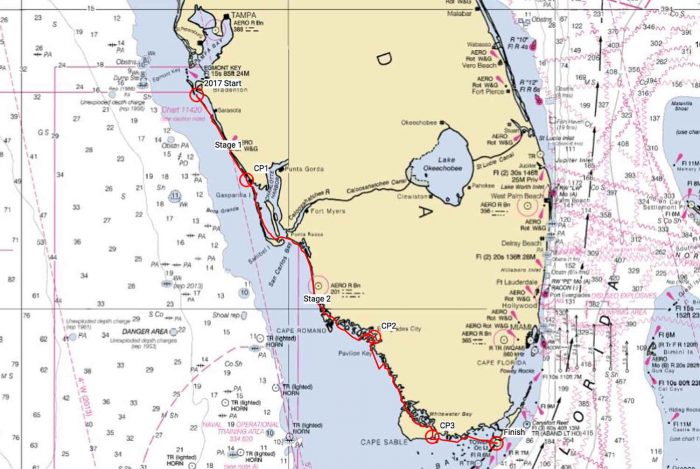‘I’ve been hallucinating, talking to a tiny spirit baby hanging onto the boat.’ Our editor paddled through glory and despair in the 300-mile Everglades Challenge.
TWELVE HOURS INTO THE RACE we encounter our first manatee. Our kayak stops with an abrupt thud, the ocean exploding all around. Water boils, we brace, adjusting, hoping to avoid capsizing on top of a 1,000-pound sea cow under the hull.
Welcome to the Everglades Challenge, a long-running “expedition-style adventure race for kayaks, canoes, and small boats.” Your goal is to complete a loosely outlined choose-your-adventure course across Florida’s wildest expanse.
The Everglades Challenge
The Everglades Challenge dates back to 2001. Founded by waterman Steve Isaacs, the event has become an iconic test of endurance and tenacity for a growing number of hard-core folks angling for membership in the WaterTribe. Isaacs is “Chief,” and upon registering for their first race, new members must choose a tribe name.
I became Piglet. My paddling partner and longtime racing teammate, Dan Staudigel, became the Angry Fat Kid. Both monikers have their own storied past.
The tribe manifesto reads: “The purpose of WaterTribe is to encourage the development of boats, equipment, skills, and human athletic performance for safe and efficient coastal cruising using minimal impact human- and wind-powered watercraft based on sea kayaks, canoes, and small sailboats.”
If the 100 or so boats lined up on the beach (and the sun-grizzled captains) is any indication, that mission is very much alive.
2017 Challenge
In the 17 years since its first iteration, the race has prided itself on running no matter the conditions. It was canceled forcefully by the coast guard in 2015 when winds were so strong they capsized many of the boats near the start. Since then, Chief and the Coast Guard have had an uneasy truce, with an agreement to not start the race during an official USCG Small Craft warning.
This year had such conditions, so we sat on the beach for a day… waiting. Chief called a meeting, and new rules were set. Racers would have to get their boats across to the other side of the bay, find somewhere to “stealth camp,” and start the next morning. This was a daunting task considering many already sent their cars to the finish line, 300 miles south at Key Largo.

Rough Start













